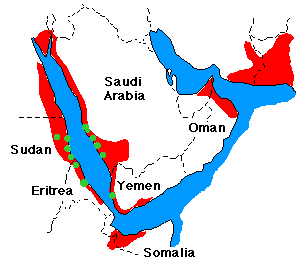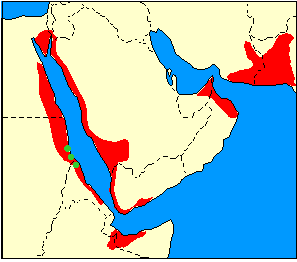18 December. Swarms start to form on Red Sea coast
Control operations are in progress on the Red Sea coastal plains of Sudan and Eritrea against hopper bands and newly forming swarms. There is a risk that some of these may move across the Red Sea to Saudi Arabia, while others may persist and mature. Low numbers of adults are present on the Red Sea coasts of Saudi Arabia and Yemen, and in northern Somalia.

11 December. More breeding in Sudan and Eritrea
More breeding has been reported in Eritrea where control operations are in progress and small swarms are expected to start forming. Breeding is in progress in Sudan and Saudi Arabia, and may be underway in Yemen and Oman. Extremely good breeding conditions persist on the coastal plains along the Red Sea, Gulf of Aden and Gulf of Oman (in red). Conditions are also improving along the Iran/Pakistan border where locusts may be present. Both situations are being closely monitored.

5 December. Breeding in progress on Eritrea and Sudan coasts
Extremely good breeding conditions persist on the coastal plains along the Red Sea, Gulf of Aden and Gulf of Oman. More breeding has been reported on a small scale in Sudan, Eritrea, and Saudi Arabia, and is probably in progress in Yemen and Oman. Good rains continue to fall near the Iran/Pakistan border where a similar situation may be developing. Both situations are being closely monitored.

12 November. First swarms on Sudan coast in rainfall area
Unusually heavy rains fell in late October on the coastal plains along the Red Sea, Gulf of Aden and Gulf of Oman (in red). All of these areas are very good for locust breeding. Adults and a few small swarms from the summer breeding areas are likely to take advantage of the good conditions and lay eggs in the coming weeks. This could result in a sudden increase in locust numbers. As the rains are early, several generations of breeding could occur. So far, a few swarms and adults were seen laying on the Red Sea coast of Sudan which were treated but probably could not prevent laying. Another swarm was reported in northern Eritrea near the Sudanese border. The situation is being monitored very closely.





